 |
 |
|
|
|
|
The most expensive and one of the most elaborate structures built at
Great Adventure in 1974 as part of the initial construction was Best of
the West. The building was designed as a true timber frame structure
utilizing massive logs. The enormous logs required were harvested and
trucked down from Canada's Yukon Territory. The transcontinental trip
must have been long and somewhat dangerous but speaks of the authentic
details that Warner LeRoy was striving for in the park. |
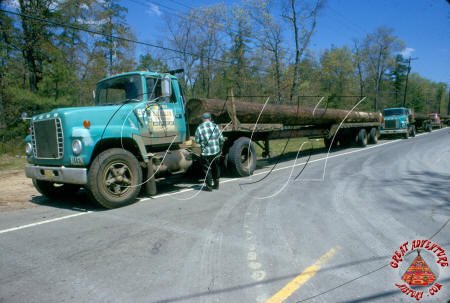 |
|
|
|
 |
 |
|
|
|
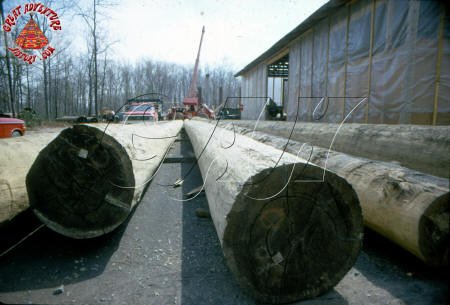 |
 |
|
|
|
 |
Upon arrival the logs were prepared for construction. Part of the
process was sandblasting the exteriors of the logs to remove any
remaining bark as well as the accumulation of road dirty from the nearly
4000 mile journey from the Yukon.
Once the logs had been
prepared, the logs were marked out for construction with holes,
notches and cuts having to be made on the ground and very precisely so
when they were hoisted into place they would fit together like a giant
set of Lincoln Logs. |
|
|
|
 |
 |
|
|
|
|
Each piece was cut, notched and labeled for assembly. One of the most
amazing things to note about the process is just how much of the work
was done by hand and how much skill it took on the part of the
construction crew to carefully shape and pre-cut the logs in order to
make them fit. |
 |
|
|
 |
|
|
|
 |
 |
|
|
|
 |
 |
|
|
|
 |
A temporary shed was in place for the construction workers to take
shelter from the elements to keep on schedule. Temporary rails were laid
for moving the heavy logs out of the shelter and into place for
construction. With the very tight timeline for construction, all of the
cutting and assembly had to be done in just a couple of months. The log
framework itself appears to have been completed in the course of about
three months. |
|
|
 |
|
|
|
 |
 |
|
|
|
 |
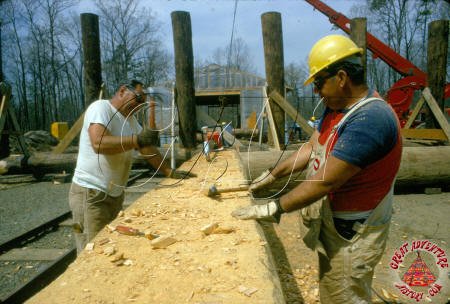 |
|
|
|
 |
 |
|
|
|
|
A wide range of tools and skills were utilized for the construction
including hand saws, chainsaws, axes, hatchets and drills. The hand-made
quality of the building made construction time consuming but added to the
rustic authenticity of the building. |
 |
|
|
|
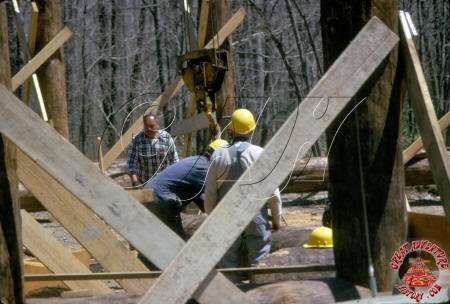 |
 |
|
|
|
 |
 |
|
|
|
 |
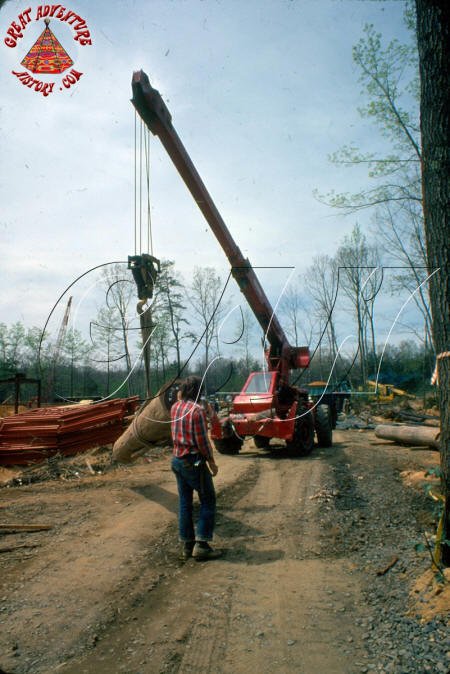 |
|
|
|
 |
While all the logs were being cut and shaped, other crews were hard at
work on the foundation of the building and the "basement" level. The
foundation of the building went right up to the edge of the lake and an
additional boardwalk was built over the lake which would create the
pathway around the back of the building. The "basement" would serve as
the location for the air conditioning units for both Best of the West as
well as the adjoining Super Teepee. This was also where the compressors
for the building's walk in refrigerator and freezer were housed. |
|
|
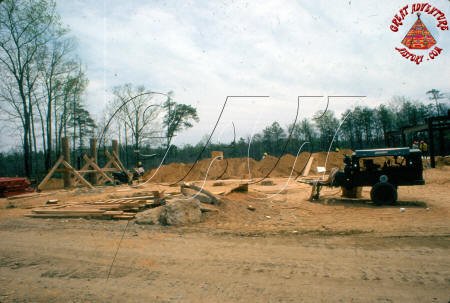 |
|
|
|
 |
 |
|
|
|
 |
 |
|
|
|
 |
 |
|
|
|
|
Once the foundation was completed, the
first of the massive log walls began to take shape. The upright logs
went vertical and were capped by the long sills that would support the roof
beams. |
 |
|
|
|
 |
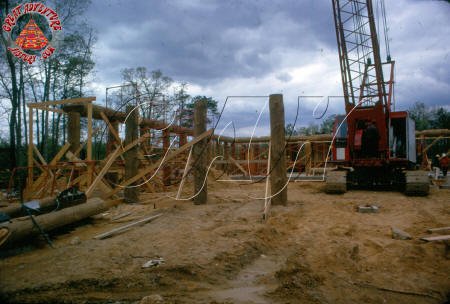 |
|
|
|
 |
 |
|
|
|
 |
 |
|
|
|
 |
On the back side of the building where the kitchen was located a steel
framework was built for the walk-in refrigerator and freezer units.
Simultaneously the restaurant's concrete floor was being formed with
rebar on top of the sand fill. |
|
|
|
 |
 |
|
|
|
|
With the outer walls framed, the workers assembled the central support
structure and began stringing the roof logs. A scaffold was setup in
the middle allowing the crew easy access as each beam was hoisted into
position with a crane. Once all the logs were in place, the roof was
sheathed and covered with rustic roofing materials. The center section
of the building was outfitted with a skylight which allowed the natural
light to fill the huge space. |
 |
|
|
|
 |
 |
|
|
|
 |
With all the main building construction completed, the work crews turned
their attention to the finish details like the log railings. Despite the
best efforts of the construction crews, Best of the West along with the
rest of the Rootin' Tootin' Rip Roarin' section wasn't quite ready for
the July 1st opening day, but opened just three days later on July 4th. |
|
|
|
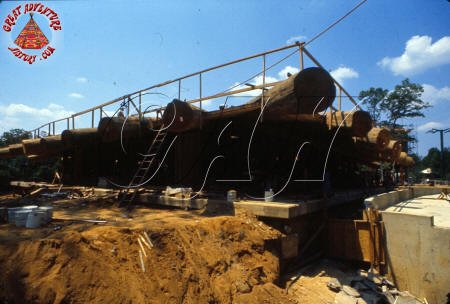 |
 |
|
|
 |
|
|
|
|
|

![]()